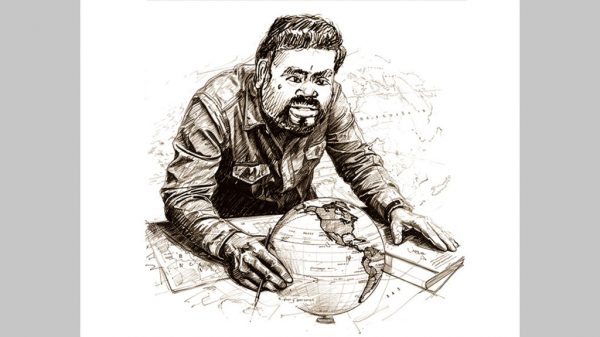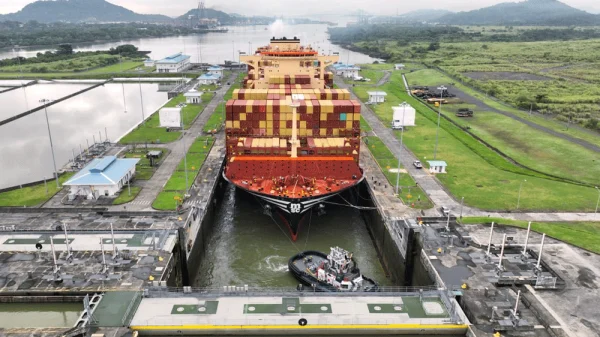CEYLON’S FORTUNE COOKIE

In the midst of an unprecedented socioeconomic and political crisis, Sri Lanka is now searching urgently for aid as well as answers. Naturally, a crisis of such magnitude cannot be reduced to a single cause and the country’s present situation is attributable to many contributing factors. The crippling lack of foreign exchange reserves can be partially explained by the impact of the COVID-19 pandemic and its impact on Sri Lanka’s tourism industry, the third largest source of its foreign exchange earnings. The tourism industry, already reeling from the aftermath of the 2019 Easter Sunday bombings, was dealt a further blow by the pandemic. Meanwhile, on the food security front, Sri Lanka’s ill-conceived and abrupt experiment with large scale organic farming has also contributed to its ongoing food shortage.
However, the central cause of Sri Lanka’s economic woes cannot be attributed merely to the bad luck of the pandemic or a few poorly judged policy decisions (such as the focus on organic farming or sudden changes in the tax regime). For several years now, the country has been incurring large amounts of debt, the lion’s share being from China. These debts now act as an unbearable burden, crippling development opportunities as well as limiting the options available to Sri Lanka to address the present crisis.
Likewise, the bulk of Sri Lanka’s infrastructure investment decisions have not been particularly productive. For instance, the Hambantota International Port was constructed with the aid of Chinese investment to the tune of $1.12 billion. To put this in context, the entirety of Sri Lanka’s foreign reserves presently stand at $1.94 billion, while Colombo has been forced to seek out emergency credit lines for approximately $1 billion just to meet the food and electricity requirements of the population.
While the Hambantota port operations are notionally profitable when disregarding the cost of capital, they generate a meagre $2 million per year. This paltry sum still leaves the entire project economically unviable. Chinese corporations now hold the majority stake in this port, while Beijing has also cornered a 99-year lease as a result of Colombo’s inability to repay the associated debt. And in an eerie déjà vu, China now also possesses a 99-year lease on Colombo Port City, built on land reclaimed from the Colombo sea-front. Numerous allegations, including a 2018 report in the New York Times suggest that the Rajapaksa family received dubious payments, including the finance of their election campaign, from China Harbour, the company behind the construction works of Colombo Port City.
These are not isolated examples. The primary outcome of such indiscriminate China-financed investments has been the accrual of debts that cannot realistically be discharged, and to make matters worse, these debts are invariably secured with key local resources, with Sri Lanka’s valuable strategic resources used as collateral and then handed over to Chinese corporations once the debt becomes unserviceable. This modus operandi is not limited to Sri Lanka either, the same predatory behavior being observed across a number of developing economies where China has provided loans through its Belt and Road Initiative (BRI). Invariably, these loans (often camouflaged as development assistance) require a Memorandum of Understanding with China, are collateralized through key local resources, and involve both higher rates of interest and shorter tenures than comparable financing options from multilateral institutions or commercial lenders.
A similar scenario is in the making in Pakistan too. Projects in excess of $25 billion under the BRI have resulted in Pakistan’s external debt to China alone ballooning to $24.7 billion. The same pattern of dubious infrastructure development culminating in increasing debts has been observed in a number of countries that have accepted Chinese infrastructure investments, such as the Maldives, Myanmar, Djibouti and Kyrgyzstan, to name a few. However, unlike these other borrowers who are yet to face the full consequences of their ill-advised dalliances with Beijing, Sri Lanka’s unique circumstances have resulted in an epic public crisis. The loss of basic amenities has energized the Sri Lankan population and led to demands for not only a change in government but also for a fundamentally different way of doing politics.
Colombo now needs to carefully consider its next steps. Further financial assistance from China is being offered, but only to the very limited tune of $1 billion, and solely for the purpose of meeting earlier debt obligations. This path would lead only towards further dependency while doing nothing to meet the country’s immediate needs. Sri Lankan officials are in the process of meeting with IMF representatives to seek urgent assistance. Undoubtedly, the most imminent need is urgent lines of credit to boost forex reserves thereby allowing for critical imports and the resumption of normal functioning of society. But in the long run, even more critical will be a fundamental reform of the economy and the behaviour of Sri Lankan politicians, moving towards reducing the debt dependency and ensuring that critical strategic and natural resources are not wasted or misallocated.





























Leave a Reply